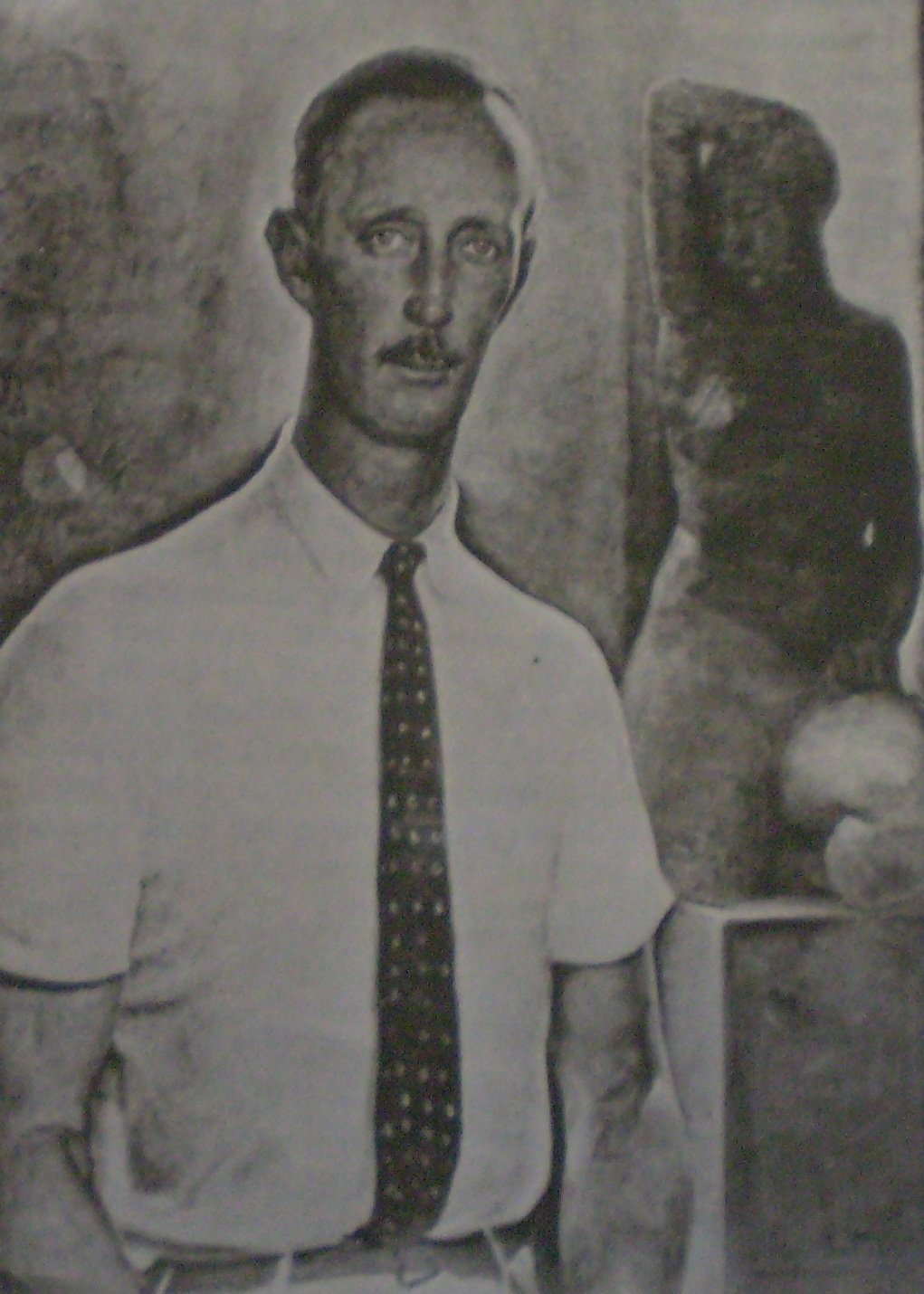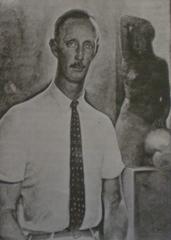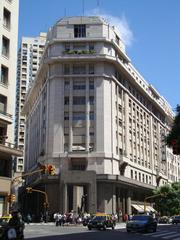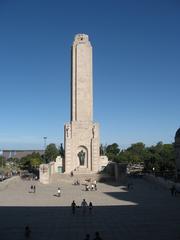
Alejandro Bustillo Buenos Aires: Visiting Hours, Tickets, and Historical Sites Guide
Date: 15/06/2025
Introduction
Alejandro Bustillo (1889–1982) is a leading figure in Argentine architecture, whose monumental works have profoundly shaped the urban and cultural landscape of Buenos Aires and Argentina as a whole. With a career that spanned the country’s formative years of modernization, Bustillo’s signature blend of Beaux-Arts classicism and modernist innovation is evident in landmark buildings such as the Banco de la Nación Argentina, Casa de Victoria Ocampo, and the Museo Nacional de Bellas Artes (Museo Virtual Begui; TN.com.ar). This comprehensive guide provides practical visitor information—including visiting hours, ticketing, accessibility, and travel tips—alongside historical context to help you appreciate Bustillo’s enduring architectural legacy.
Contents
- Early Life and Family Heritage
- Education and Artistic Formation
- Architectural Career and Influences
- Major Works: Locations, Hours, and Tips
- Banco de la Nación Argentina
- Casa de Victoria Ocampo
- Museo Nacional de Bellas Artes
- Palais de Glace
- Additional Notable Works
- Touring Bustillo’s Buenos Aires: Visitor Tips
- Accessibility, Safety, and Etiquette
- Practical Itineraries and Nearby Attractions
- FAQs
- Sources and Further Reading
Early Life and Family Heritage
Alejandro Bustillo was born in Buenos Aires into a family with significant historical influence. His ancestry included military leaders and public figures, such as General José María Bustillo and engineer Eduardo Madero, designer of Puerto Madero (Museo Virtual Begui). This strong sense of national heritage deeply influenced Bustillo’s architectural philosophy, which sought to blend Argentine identity with European sophistication.
Education and Artistic Formation
Bustillo attended the Otto Krause Technical School and later the University of Buenos Aires to study architecture. His early passion for painting, confirmed by winning the 1912 National Salon of Painters, informed his attention to aesthetics. A formative period in Paris exposed him to Beaux-Arts classicism, which he would later adapt to Argentine contexts (Prabook).
Architectural Career and Influences
Starting with rural estancias, Bustillo soon moved to landmark urban commissions, such as the Tornquist residence (now the Belgian Embassy) and Banco Tornquist. His travels and education in Europe inspired a fusion of classical monumentalism and local symbolism, visible in his later urban and cultural buildings (Argentime; Moderna Buenos Aires).
Major Works: Locations, Hours, and Visitor Tips
Banco de la Nación Argentina
- Location: Avenida Rivadavia 326, San Nicolás, Buenos Aires
- Significance: Inaugurated in 1944, this imposing neoclassical bank is a symbol of Argentina’s financial and architectural ambition, featuring a monumental concrete dome and stately columns (Lonely Planet).
- Visiting Hours: Monday to Friday, 9:00 AM – 5:00 PM (main hall); Museo Histórico y Numismático open 10:00 AM – 4:00 PM.
- Tickets: Free entry.
- Accessibility: Wheelchair accessible.
- Guided Tours: Available by appointment or during special cultural events.
- Nearby: Casa Rosada, Plaza de Mayo, Metropolitan Cathedral.
Casa de Victoria Ocampo
- Location: Rufino de Elizalde 2831, Palermo Chico, Buenos Aires
- Significance: Built in 1928–29, this is Argentina’s first rationalist house. Its minimalist, modernist design was revolutionary for its time (ArchDaily).
- Visiting Hours: Tuesday to Sunday, 12:00 PM – 7:00 PM.
- Tickets: Free; some events may require tickets.
- Accessibility: Publicly accessible, check for event-specific arrangements.
- Guided Tours: Regular tours and cultural events; consult Fondo Nacional de las Artes.
- Tips: Photography is generally allowed; check event rules.
Museo Nacional de Bellas Artes
- Location: Avenida del Libertador 1473, Recoleta, Buenos Aires
- Significance: Adapted from a former waterworks by Bustillo in 1931, this museum is a leading cultural institution, housing masterpieces by Goya, Rembrandt, and Argentine artists (TN.com.ar).
- Visiting Hours: Tuesday to Sunday, 11:00 AM – 7:00 PM; closed Mondays.
- Tickets: Free.
- Accessibility: Fully wheelchair accessible.
- Nearby: Recoleta Cemetery, Floralis Genérica.
Palais de Glace
- Location: Posadas 1725, Recoleta, Buenos Aires
- Significance: Originally an ice rink, later converted by Bustillo into an art exhibition space, retaining its domed circular layout (BSAS.net.ar).
- Visiting Hours: Wednesday to Sunday, 1:00 PM – 8:00 PM.
- Tickets: Free; some exhibitions may have fees.
- Accessibility: Wheelchair friendly.
- Events: Hosts rotating art exhibitions and cultural programs.
Additional Notable Works (Exterior Viewing)
- Palacio Devoto: Marcelo T. de Alvear 1700, Recoleta. Not open to the public; admire from outside (Infobae).
- Edificio Volta: Av. Roque Sáenz Peña 832, Microcentro. Office building, best viewed from outside (Para Ti).
- Banco Tornquist: Bartolomé Mitre 553, Microcentro. Exterior viewing only.
- Casa Fioravanti: Acoyte 741, Caballito. Private; exterior viewing.
Touring Bustillo’s Buenos Aires: Visitor Tips
- Best Times: Weekday mornings offer fewer crowds and optimal lighting for photos.
- Neighborhood Itineraries: Cluster sites by area (e.g., Recoleta, Palermo Chico, Microcentro) to maximize efficiency.
- Transport: Buenos Aires’ subte (subway) and bus network are extensive. Walking tours are ideal for Recoleta and Palermo.
- Guided Tours: Architecture-focused walking tours provide expert context (PlanetWare).
- Language: Spanish is dominant; English available in major museums and tours.
Accessibility, Safety, and Etiquette
- Accessibility: Major sites (Banco de la Nación, Museo Nacional de Bellas Artes, Casa de Victoria Ocampo) are wheelchair accessible.
- Safety: Tourist areas are generally safe; exercise standard precautions, especially after dark (Solsalute).
- Etiquette: Respect private residences, avoid intrusive photography, follow posted site rules.
Practical Itineraries and Nearby Attractions
- Combine Visits: Pair Bustillo monuments with nearby landmarks, such as Recoleta Cemetery or Plaza de Mayo.
- Dining: Explore local cafés and restaurants in Palermo and Recoleta.
- Other Attractions: Teatro Colón, Centro Cultural Kirchner, and the city’s many parks enrich your architectural tour (Short Girl on Tour).
Frequently Asked Questions (FAQ)
Q: Are tickets required for Bustillo’s buildings?
A: Most, like Museo Nacional de Bellas Artes and Casa de Victoria Ocampo, offer free entry; some events may require tickets.
Q: Can I access the interiors of all these buildings?
A: Interiors are generally open at museums and Casa de Victoria Ocampo; others (e.g., Palacio Devoto, Banco Tornquist) are private/commercial—exterior viewing only.
Q: Are guided tours available in English?
A: Yes, at major sites and through select tour companies.
Q: Is photography allowed?
A: Generally yes, but check event and site-specific rules.
Q: How can I plan a self-guided tour?
A: Use city guide apps, downloadable maps, and official tourism sites for route planning (Vamos Spanish).
Conclusion
Alejandro Bustillo’s architectural masterpieces are not only visual icons but also active cultural venues that embody Argentina’s national aspirations and artistic evolution. A visit to these sites offers a rewarding intersection of history, art, and urban exploration, whether you’re an aficionado or a casual traveler. For the best experience, use official resources, download the Audiala app for curated tours, and explore the vibrant neighborhoods that house Bustillo’s legacy.
Sources and Further Reading
- Museo Virtual Begui – Alejandro Bustillo
- TN.com.ar – Alejandro Bustillo, el arquitecto clásico nacional
- Moderna Buenos Aires – Alejandro Bustillo
- Lonely Planet – Banco de la Nación Argentina
- ArchDaily – Casa de Victoria Ocampo
- Infobae – Palacio Devoto
- Para Ti – Edificio Volta
- BSAS.net.ar – Bustillo
- PlanetWare – Buenos Aires Attractions
- Vamos Spanish – Buenos Aires Travel Tips
- Solsalute – Buenos Aires Travel
- Short Girl on Tour – Buenos Aires Tips
































































































































































